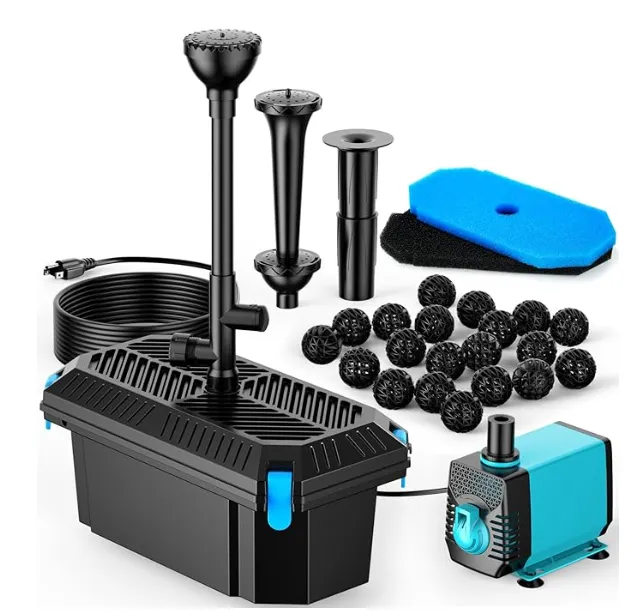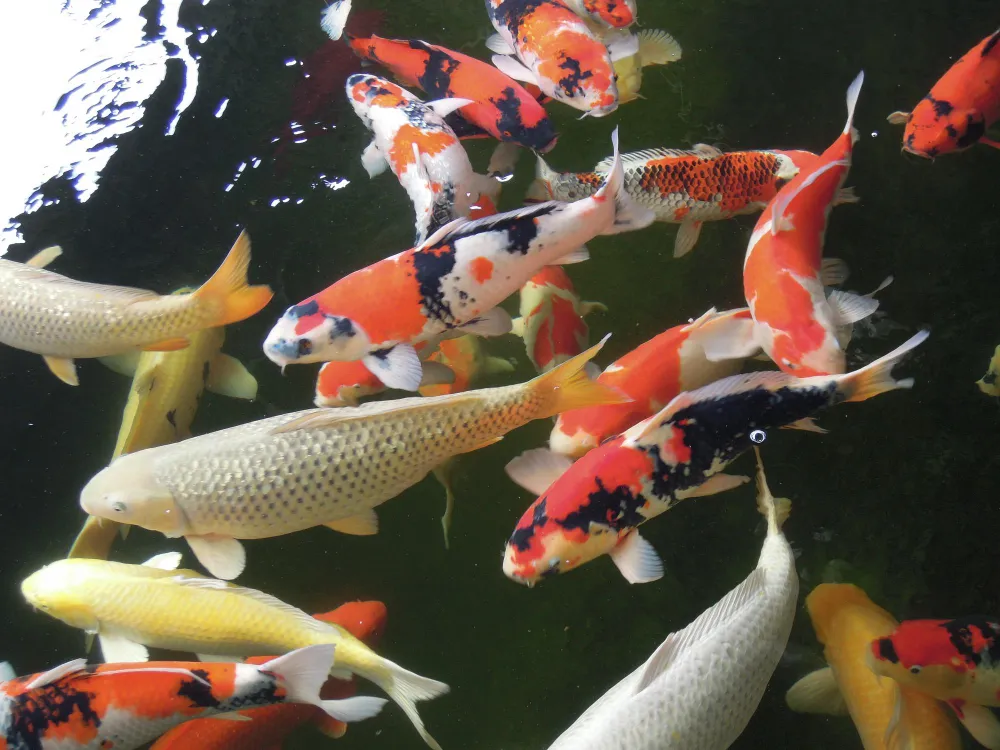

Introduction to Koi Pond Maintenance
Koi ponds are not just a beautiful addition to any garden; they require careful koi pond maintenance to ensure the health and longevity of the fish and the overall ecosystem. Koi, known for their vibrant colors and variety, can live for several decades if properly cared for. This article will provide a comprehensive guide to koi pond maintenance, covering essential aspects such as water quality management, filtration systems, and plant selection. By understanding these elements, koi enthusiasts can create a thriving environment for their fish and enhance the beauty of their outdoor spaces through effective koi pond maintenance.
Water Quality Management
Importance of Water Quality
Water quality is paramount in maintaining a healthy koi pond. Koi are sensitive to changes in their environment, and poor water quality can lead to stress, illness, and even death. Maintaining optimal water conditions fosters a balanced ecosystem that promotes the growth of beneficial bacteria, which helps break down waste and maintain clear water. Regular monitoring and management of water quality not only ensure the health of the koi but also enhance the overall aesthetic of the pond.
Proper koi pond maintenance includes regular checks on water quality, ensuring that your koi remain healthy and vibrant.
Furthermore, water quality impacts the growth of aquatic plants and the proliferation of microorganisms that contribute to the pond’s health. Hence, koi keepers must prioritize water quality management as a fundamental aspect of their maintenance routine.
Key Parameters to Monitor
When assessing water quality, several key parameters should be monitored regularly:
- pH Levels: Koi thrive in slightly alkaline water with a pH between 7.0 and 8.5. Regular testing helps prevent shifts that can harm the fish.
- Ammonia and Nitrite Levels: Both are toxic to koi, so levels should be kept as low as possible (0 ppm) to avoid health risks.
- Nitrate Levels: While less harmful than ammonia, high nitrate levels (over 40 ppm) can lead to algae blooms and stress for koi.
- Temperature: Koi prefer water temperatures between 60°F and 75°F. Extreme temperatures can affect their immune systems.
Testing Water Quality
To effectively monitor these parameters, koi pond owners can use various testing kits available in the market. These kits typically include test strips or liquid solutions that provide readings for pH, ammonia, nitrite, and nitrate levels. Regular testing, at least once a week during the warmer months, is crucial for early detection of potential issues. Additionally, observing the koi’s behavior can provide insights into water quality; abnormal behaviors often indicate problems.
One important aspect of koi pond maintenance is ensuring the water is treated properly to avoid harmful chemicals that may affect the health of your koi.
Incorporating water changes is another vital aspect of managing water quality. Replacing a portion of the pond water weekly helps dilute harmful substances and maintain balance. However, it’s essential to treat new water with a dechlorinator before adding it to the pond, as chlorine is detrimental to fish.
To achieve effective koi pond maintenance, it’s also essential to consider the balance of fish and plant life in your pond.

Consistent koi pond maintenance is key to a thriving aquatic environment, which includes maintaining the right water chemistry.
Tips for Maintaining Optimal Water Conditions
To keep water quality at its best, consider the following tips:
- Regular Water Changes: Change 10-20% of the pond water weekly to prevent the buildup of toxins.
- Use a Quality Dechlorinator: Always treat new water to eliminate chlorine and chloramine.
- Monitor Stocking Levels: Avoid overstocking, which can lead to excessive waste and poor water quality.
- Adjust Feeding Practices: Feed koi only what they can consume in a few minutes to minimize waste.
Filtration Systems
Overview of Filtration Systems
A reliable filtration system is essential for maintaining clear and healthy water in a koi pond. The primary function of a filtration system is to remove debris, uneaten food, and fish waste from the water, thereby preventing the buildup of harmful substances. The effectiveness of a filtration system can significantly impact water quality, making it a critical consideration in koi pond maintenance.
There are two main types of filtration: mechanical and biological. Mechanical filtration physically removes particles from the water, while biological filtration utilizes beneficial bacteria to break down harmful substances like ammonia and nitrite. A well-designed filtration system will incorporate both types to provide optimal water clarity and quality.
Types of Filtration Systems
Choosing the right filtration system is a vital part of koi pond maintenance to ensure water remains clear and healthy.
There are several types of filtration systems available for koi ponds, each with its unique advantages:
- Pressure Filters: These are compact and effective for smaller ponds, providing both mechanical and biological filtration.
- Gravity Filters: Suitable for larger ponds, these filters rely on gravity to pull water through the system. They are efficient but require proper placement.
- Submersible Pumps: These are installed underwater and are ideal for smaller ponds, providing easy maintenance and setup.
- External Pumps: Mounted above the water, these pumps are suitable for larger ponds and offer robust filtration capabilities.
Choosing the Right Filtration System
When selecting a filtration system, consider the size of your pond, the number of koi, and your specific maintenance needs. It’s essential to choose a system that can handle the pond’s water volume and provide adequate filtration. Consulting with local pond professionals can help koi enthusiasts make informed decisions based on their unique circumstances.
Additionally, it’s crucial to consider the energy efficiency of the filtration system. High-efficiency systems not only reduce environmental impact but can also result in significant savings on energy bills over time.
Regular Maintenance of Filtration Systems
Filtration systems require regular maintenance to ensure they operate effectively. This includes cleaning filter media, checking pump functionality, and replacing worn parts. The frequency of maintenance depends on the type of filter and the pond’s conditions, but generally, a thorough cleaning is recommended at least once a month.
During maintenance, it is important to rinse filter media in pond water rather than tap water, as tap water can kill beneficial bacteria essential for biological filtration. Keeping a maintenance log can help track cleaning schedules and any repairs needed for the filtration system.
Advancing your skills in koi pond maintenance can also involve educating yourself on common health issues that koi may face.
Plant Selection and Care
Benefits of Aquatic Plants in Koi Ponds
Effective koi pond maintenance includes understanding the role that each aquatic plant plays in the ecosystem.
Aquatic plants play a vital role in koi pond ecosystems. They provide shade and shelter for koi, helping to reduce stress levels and prevent overheating in warm weather. Additionally, plants contribute to water quality by absorbing excess nutrients and competing with algae for resources. A well-planned selection of aquatic plants can enhance the beauty of a koi pond and improve the health of its inhabitants.
Moreover, aquatic plants promote biodiversity by attracting beneficial organisms such as insects and amphibians, which contribute to a balanced ecosystem. They also provide oxygen during the day through photosynthesis, which is essential for the well-being of koi and other pond inhabitants.
Types of Suitable Plants
There are several categories of aquatic plants suitable for koi ponds:
- Floating Plants: These plants float on the surface and include species like water lettuce and duckweed. They provide shade and reduce algae growth.
- Submerged Plants: Examples include anacharis and hornwort, which help improve water quality by absorbing nutrients and providing oxygen.
- Marginal Plants: These are planted at the edges of the pond, such as cattails and water hyacinth, adding aesthetic appeal while providing habitat and filtration.
- Water Lilies: A favorite for many pond owners, water lilies add beauty and provide shade for koi, helping to regulate water temperature.
Regular koi pond maintenance helps to prevent problems before they arise, keeping your fish happy and healthy.
Incorporating koi pond maintenance into your routine will lead to a more enjoyable and serene pond experience.
Plant Care and Maintenance Tips
Ultimately, koi pond maintenance is a rewarding task that requires attention and dedication.
Maintaining aquatic plants requires attention to their specific needs. Here are some tips for successful plant care:
With thorough koi pond maintenance, your fish will thrive, and your pond will be a beautiful focal point in your garden.
- Choose the Right Plants: Select plants that are suitable for your pond’s depth and sunlight conditions.
- Regular Pruning: Trim dead or overgrown foliage to promote healthy growth and prevent the spread of disease.
- Monitor Water Levels: Ensure that water levels are consistent, particularly during hot weather, to prevent plant stress.
- Fertilize Wisely: Use specialized aquatic plant fertilizers sparingly to avoid nutrient overload that can lead to algae blooms.
Remember that ongoing education about koi pond maintenance can lead to improved results and a healthier pond.
Being proactive with koi pond maintenance will ensure that you can enjoy your pond year after year with minimal issues.
Lastly, effective koi pond maintenance is about creating a harmonious environment for both fish and plants.
Conclusion: The Importance of Consistent Koi Pond Maintenance
In summary, mastering koi pond maintenance will greatly enhance your experience as a koi keeper.
Maintaining a koi pond is a rewarding endeavor that requires careful attention to water quality, filtration systems, and plant life. By prioritizing these elements, koi keepers can create a healthier environment for their fish, enhance the beauty of their gardens, and enjoy the tranquility that a well-maintained koi pond provides. Regular monitoring and care not only ensure the longevity of the koi but also promote a balanced ecosystem that benefits all living organisms in the pond.
Ultimately, consistent koi pond maintenance is not just about keeping water clear; it’s about fostering a thriving environment that supports the health of the fish and the enjoyment of their caretakers. With the right knowledge and dedication, anyone can successfully maintain a beautiful koi pond.
FAQs
What is the ideal pH level for koi ponds?
The ideal pH level for koi ponds is between 7.0 and 8.5. Regular testing is important to keep the pH balanced.
How often should I change the water in my koi pond?
It is recommended to change 10-20% of the pond water weekly to maintain optimal water quality and dilute toxins.
What type of filtration system is best for a koi pond?
The best filtration system depends on the pond’s size and the number of koi. Both mechanical and biological filtration are essential for effective results.
Can koi ponds have too many aquatic plants?
While aquatic plants are beneficial, overplanting can lead to oxygen depletion and competition for nutrients; balance is key.
How do I know if my koi are healthy?
Healthy koi exhibit vibrant colors, clear eyes, and active behavior. Any signs of lethargy, discoloration, or unusual swimming patterns may indicate health issues.
You may also like
- https://giobelkoicenter.com/why-are-koi-fish-so-expensive/
- https://giobelkoicenter.com/understanding-and-treating-bloated-koi-fish/
- https://giobelkoicenter.com/koi-fish-decor-a-comprehensive-guide/
- https://giobelkoicenter.com/ceramic-koi-fish/
- https://giobelkoicenter.com/the-mystical-world-of-koi-fish-mythology/
Table of Contents
Passionate about fish keeping since elementary school in the 1980s, Giovanni Carlo has dedicated countless hours to collecting and breeding a diverse array of ornamental freshwater fish. From vibrant guppies and majestic koi to striking bettas and classic goldfish, he continues to explore the fascinating world of aquatics, sharing knowledge and enthusiasm with fellow fish enthusiasts.